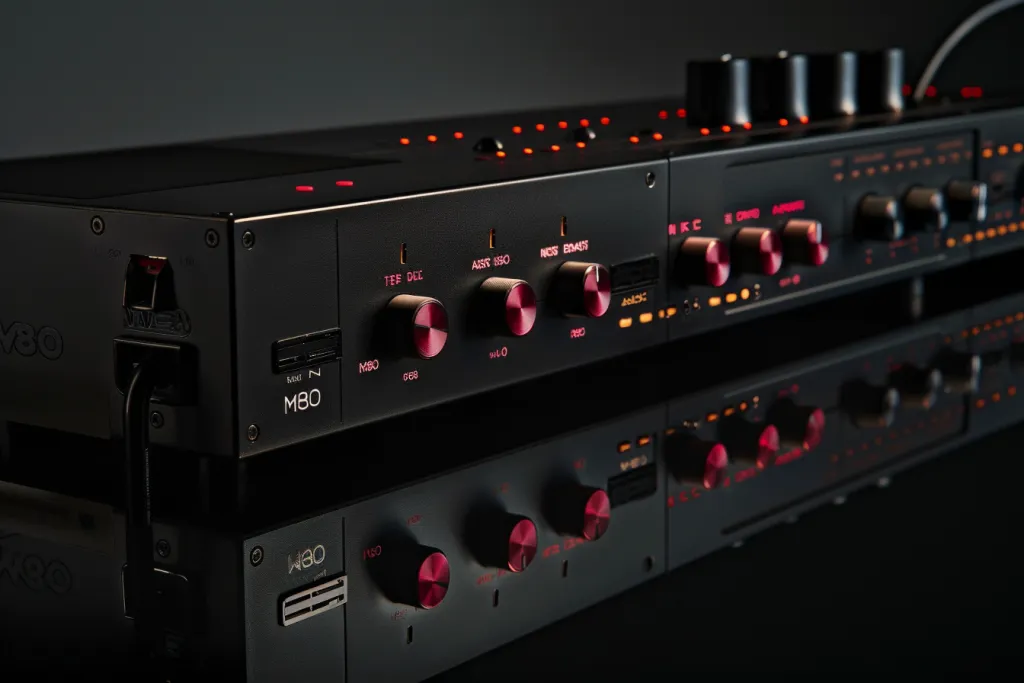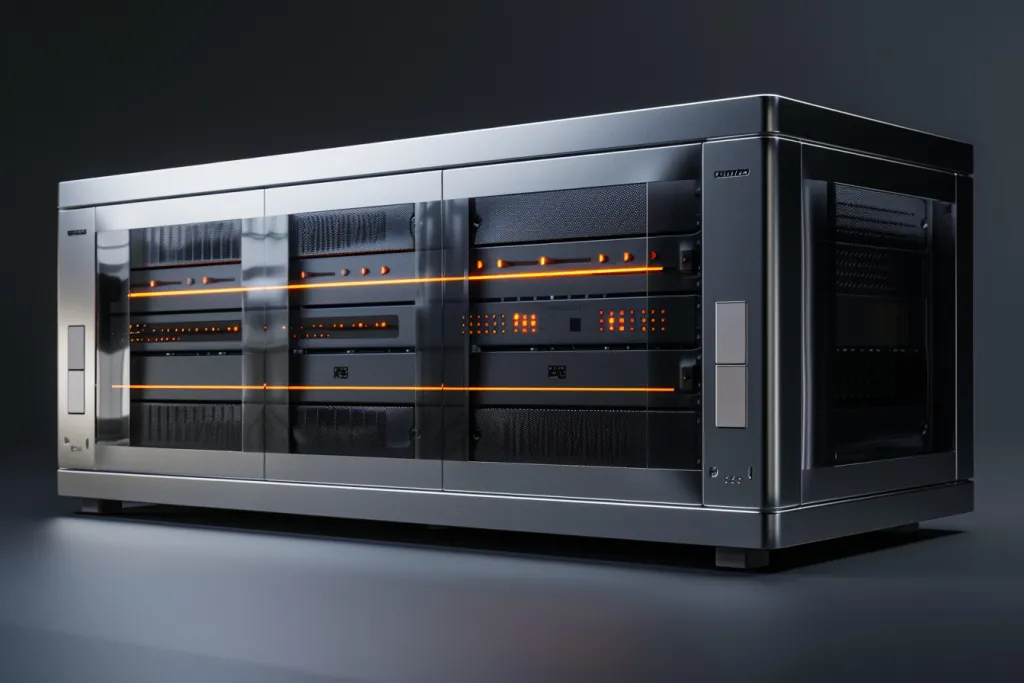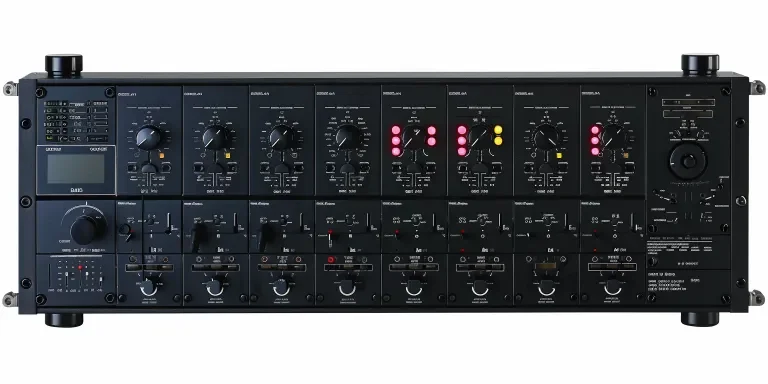In the realm of audio technology, a digital sound processor (DSP) stands out as a game-changer for audiophiles and casual listeners alike. These sophisticated devices enhance and modify audio signals in ways that were unimaginable a few decades ago. This guide delves into the intricacies of digital sound processors, offering insights into their operation, benefits, and how to make them work for you.
Table of Contents:
– What is a digital sound processor?
– How does a digital sound processor work?
– Benefits and drawbacks of digital sound processors
– How to choose a digital sound processor
– How to use a digital sound processor
What is a digital sound processor?

A digital sound processor, or DSP, is a specialized microprocessor designed with the primary function of manipulating audio signals in the digital domain. Unlike traditional audio systems that work with analog signals, DSPs convert these signals into digital format, allowing for a wide range of modifications and enhancements. This capability makes DSPs indispensable in various applications, from professional audio production to consumer electronics like smartphones and home theater systems.
The core of a DSP’s functionality lies in its ability to perform high-speed mathematical operations on digital signals. This process involves several steps, including filtering, equalization, and dynamic range compression, all aimed at improving the sound quality or achieving specific audio effects. The versatility and precision of DSPs have revolutionized the audio industry, enabling creators and consumers to achieve unparalleled sound fidelity and customization.
DSPs come in various forms, from standalone units and embedded systems to software implementations. Each type serves different needs and applications, but all share the common goal of enhancing audio performance. Whether it’s in a live sound reinforcement setting, a recording studio, or a personal audio device, DSPs play a crucial role in delivering optimized sound experiences.
How does a digital sound processor work?

At its core, a digital sound processor takes analog audio signals, converts them into digital format using an analog-to-digital converter (ADC), processes the digital data, and then converts it back to analog form with a digital-to-analog converter (DAC) for playback. This conversion process is fundamental to a DSP’s operation, enabling the manipulation of audio signals with precision and flexibility.
The digital domain offers a playground for a variety of signal processing techniques. For instance, equalization allows for the adjustment of specific frequency bands, enhancing or attenuating them to achieve the desired sound profile. Filtering, on the other hand, can remove unwanted frequencies or noise from the signal. Dynamics processing, including compression and limiting, helps manage the signal’s loudness levels, ensuring a balanced and consistent output.
Programming plays a vital role in defining a DSP’s functionality. Through sophisticated algorithms, engineers can design systems that perform complex operations, from simulating acoustic environments to creating immersive surround sound experiences. The ability to update and modify these algorithms makes DSPs incredibly versatile, capable of adapting to new technologies and audio processing techniques.
Benefits and drawbacks of digital sound processors

Digital sound processors offer a myriad of benefits, chief among them being the ability to achieve high-quality sound. By precisely manipulating audio signals, DSPs can enhance clarity, remove noise, and tailor sound to fit specific environments or preferences. This level of control is particularly beneficial in professional audio settings, where optimal sound quality is paramount.
Another significant advantage is the flexibility and customization DSPs provide. With the right programming, a single DSP can serve multiple functions, from acting as a crossover in a speaker system to providing virtual surround sound in headphones. This adaptability extends the usefulness of audio devices, allowing for a personalized listening experience.
However, DSPs are not without their drawbacks. The complexity of digital signal processing can introduce latency, a delay between the input and output signals. While minimal, this delay can be problematic in certain applications, such as live sound reinforcement. Additionally, the quality of a DSP’s performance heavily relies on the algorithms it uses, which can vary widely in effectiveness. This dependence on software means that not all DSPs are created equal, with some offering superior sound manipulation capabilities than others.
How to choose a digital sound processor

Selecting the right digital sound processor depends on several factors, including your specific audio needs, the application, and your budget. For those in professional audio production, a DSP with a wide range of processing capabilities and high-quality converters might be essential. In contrast, casual listeners might prioritize ease of use and integration with existing audio systems.
When choosing a DSP, consider the processing power and the types of algorithms it supports. A processor with higher processing capabilities can handle more complex audio tasks without introducing latency. Additionally, look for DSPs that offer the specific features you need, such as room correction, surround sound processing, or mobile app control for easy adjustments.
Compatibility with your audio system is another crucial consideration. Ensure the DSP you choose can integrate seamlessly with your existing setup, whether it’s a home theater system, a professional audio rig, or a car stereo. Pay attention to connectivity options, such as digital and analog inputs and outputs, to ensure flexibility and future-proofing.
How to use a digital sound processor

Using a digital sound processor effectively requires a basic understanding of audio principles and the specific functions of your DSP. Start by connecting your DSP to your audio system, ensuring proper signal flow from the source to the DSP and then to the output device, such as speakers or headphones.
Once connected, explore the DSP’s interface, whether it’s hardware-based or software-controlled. Familiarize yourself with its features and settings, adjusting parameters like EQ, compression, and filtering to achieve your desired sound. Many DSPs offer presets tailored to specific applications, which can serve as a good starting point for customization.
Experimentation is key to unlocking the full potential of a DSP. Don’t be afraid to tweak settings and compare the results. Listening critically to the changes each adjustment makes will help you refine your audio setup for optimal performance. Remember, the goal of using a DSP is to enhance your listening experience, so trust your ears and adjust accordingly.
Conclusion
Digital sound processors represent a cornerstone of modern audio technology, offering unparalleled control over sound quality and customization. Whether you’re a professional audio engineer or a casual listener, understanding how DSPs work and how to use them can significantly enhance your audio experiences. By carefully selecting and effectively utilizing a DSP, you can unlock new dimensions of sound, bringing clarity, depth, and precision to your favorite audio content.




